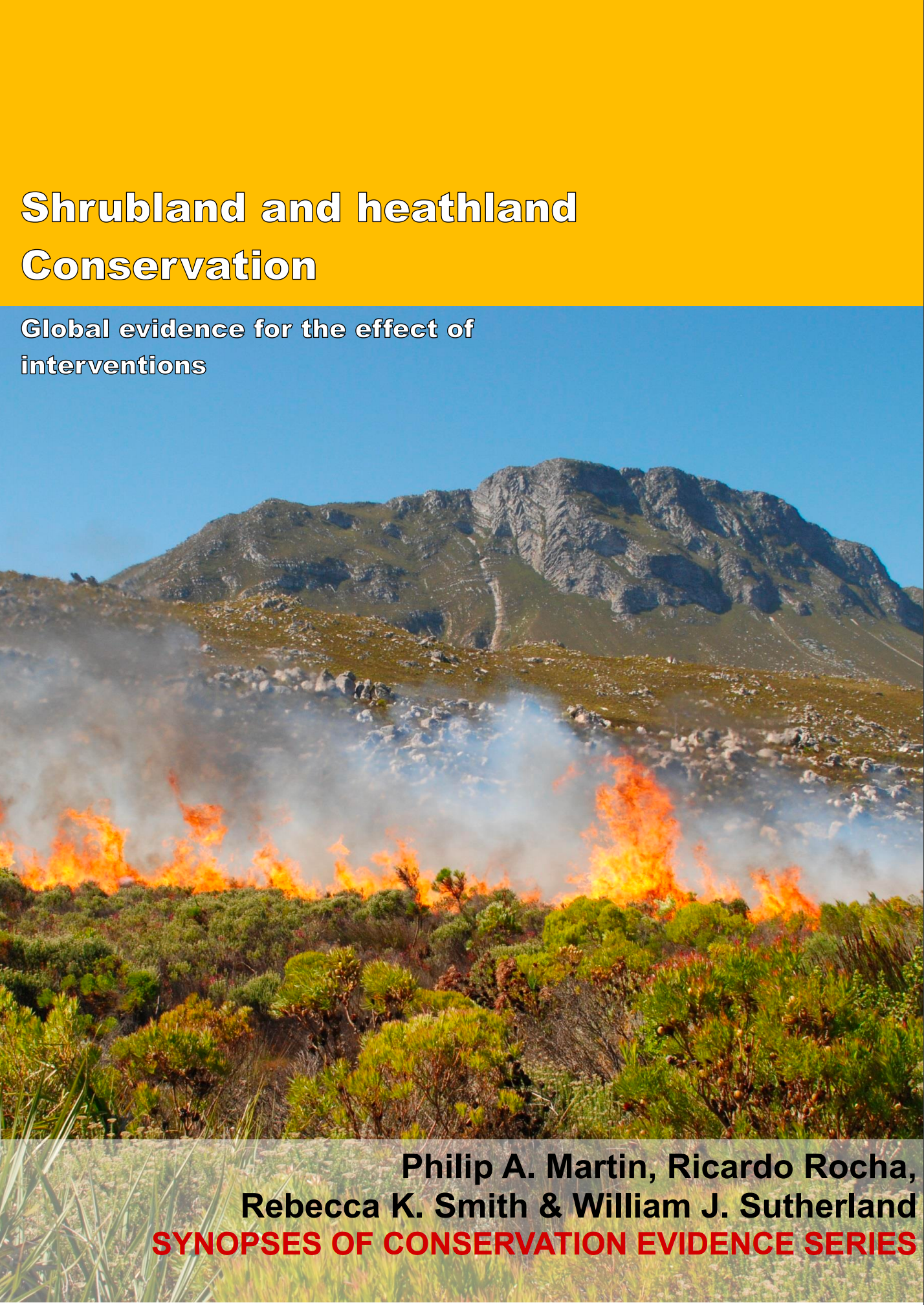Use herbicide and prescribed burning to control grass
-
Overall effectiveness category Unknown effectiveness (limited evidence)
-
Number of studies: 1
View assessment score
Hide assessment score
How is the evidence assessed?
-
Effectiveness
0% -
Certainty
10% -
Harms
20%
Study locations
Supporting evidence from individual studies
A randomized, replicated, controlled, paired, before-and-after study in 1996-1999 in wet heathland in Northumberland, UK (Ross et al. 2003) found that burning and applying herbicide to reduce the cover of purple-moor grass Molinia caerulea reduced cover of common heather Calluna vulgaris but did not reduce cover of purple-moor grass. Cover of common heather was lower after than before burning and applying herbicide (after: 26-68%, before: 70-99%) and was lower than in plots that were not burned or sprayed with herbicide (68-93%). Cover of purple-moor grass in plots that had been burned and sprayed with herbicide was not significantly different to that in plots that had not been burned or sprayed with herbicide (no data presented). In April 1996 six 10 x 10 m plots were burned and sprayed with herbicide and six plots were not burned or sprayed with herbicide. In 1995 five 1 m2 quadrats were established in each plot and vegetation was surveyed in July 1995 and 1997-1999. The area was used for livestock and density of sheep varied from 0.66 to 1.5 ewes/ha.
Study and other actions tested
Where has this evidence come from?
List of journals searched by synopsis
All the journals searched for all synopses
This Action forms part of the Action Synopsis:
Shrubland and Heathland Conservation
Shrubland and Heathland Conservation - Published 2017
Shrubland and Heathland synopsis





)_2023.JPG)














